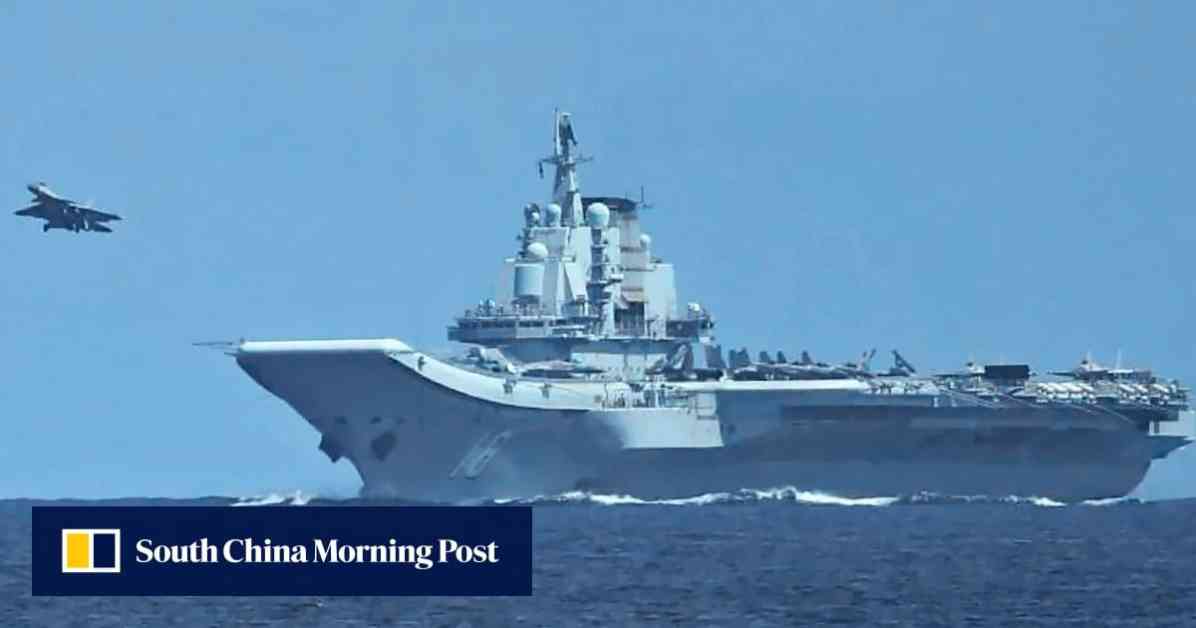China has recently conducted tests on a new type of ship-borne fighter jet on its aircraft carrier, the Liaoning, as reported by state media. This development marks a significant step forward in China’s military capabilities and underscores the country’s commitment to modernizing its armed forces. While details about the new fighter jet remain scarce, the tests have garnered attention from military experts and analysts around the world.
Testing the Next-Generation Fighter Jet
The unidentified new fighter jet was seen performing take-off tests on the Liaoning, China’s first aircraft carrier, as shown in a documentary aired by state broadcaster CCTV. The documentary, titled “Quenching,” featured Zhang Naigang, a crew member of the Liaoning, who shared his experience conducting the first test flight of the J-15 “Flying Shark” 12 years ago and now the new fighter jet.
Zhang, who is an operator of the aircraft take-off control group unit, played a crucial role in releasing fighter jets to the ski jump ramp and launching their take-offs. He reminisced about the historic moment when the first J-15 took off from the Liaoning on November 23, 2012, a feat he described as something he would be proud of “for the rest of my life.”
The documentary showcased footage of the J-15 taking off from the Liaoning but did not reveal any images or details about the new fighter jet. The secrecy surrounding the new aircraft has sparked speculation and curiosity among military observers, who are eager to learn more about China’s advancements in carrier-based aviation technology.
Implications of the Test
The successful testing of the next-generation fighter jet on the Liaoning carries significant implications for China’s naval capabilities and strategic power projection. As one of the few countries with aircraft carriers and carrier-based aviation capabilities, China’s advancements in this field signal its ambition to assert itself as a major maritime power in the Asia-Pacific region and beyond.
The development of a new ship-borne fighter jet underscores China’s commitment to enhancing its military technology and staying at the forefront of modern warfare. By testing and deploying advanced aircraft on its aircraft carriers, China aims to strengthen its naval presence and deter potential adversaries in the region.
Moreover, the tests on the Liaoning demonstrate China’s progress in developing indigenous defense capabilities, reducing its reliance on foreign military equipment, and showcasing its ability to innovate in the field of aviation technology. The new fighter jet represents a significant leap forward in China’s military modernization efforts and highlights the country’s growing influence in the global defense industry.
Challenges and Opportunities
While the testing of the new fighter jet on the Liaoning is a notable achievement for China, it also presents challenges and opportunities for the country’s military and defense industry. The development of advanced aircraft for carrier-based operations requires substantial investment in research, development, and production, as well as the training of pilots and ground crew to operate these sophisticated machines effectively.
China’s quest to build a capable and modern naval aviation force faces obstacles such as technological hurdles, budget constraints, and international competition. However, the successful testing of the new fighter jet on the Liaoning signals China’s progress in overcoming these challenges and underscores its determination to become a dominant player in the field of carrier-based aviation.
The development of a next-generation fighter jet for China’s aircraft carriers opens up opportunities for collaboration with domestic and international partners in the defense industry. By leveraging expertise and resources from various sources, China can accelerate the pace of innovation and enhance its military capabilities in a cost-effective manner.
In conclusion, the testing of a new ship-borne fighter jet on the Liaoning represents a significant milestone in China’s efforts to modernize its naval aviation capabilities and assert its presence in the Asia-Pacific region. While details about the new aircraft remain shrouded in secrecy, the tests have sparked interest and speculation among military analysts and observers worldwide. China’s advancements in carrier-based aviation technology signal its ambition to become a leading maritime power and a formidable force in the global defense arena.



















